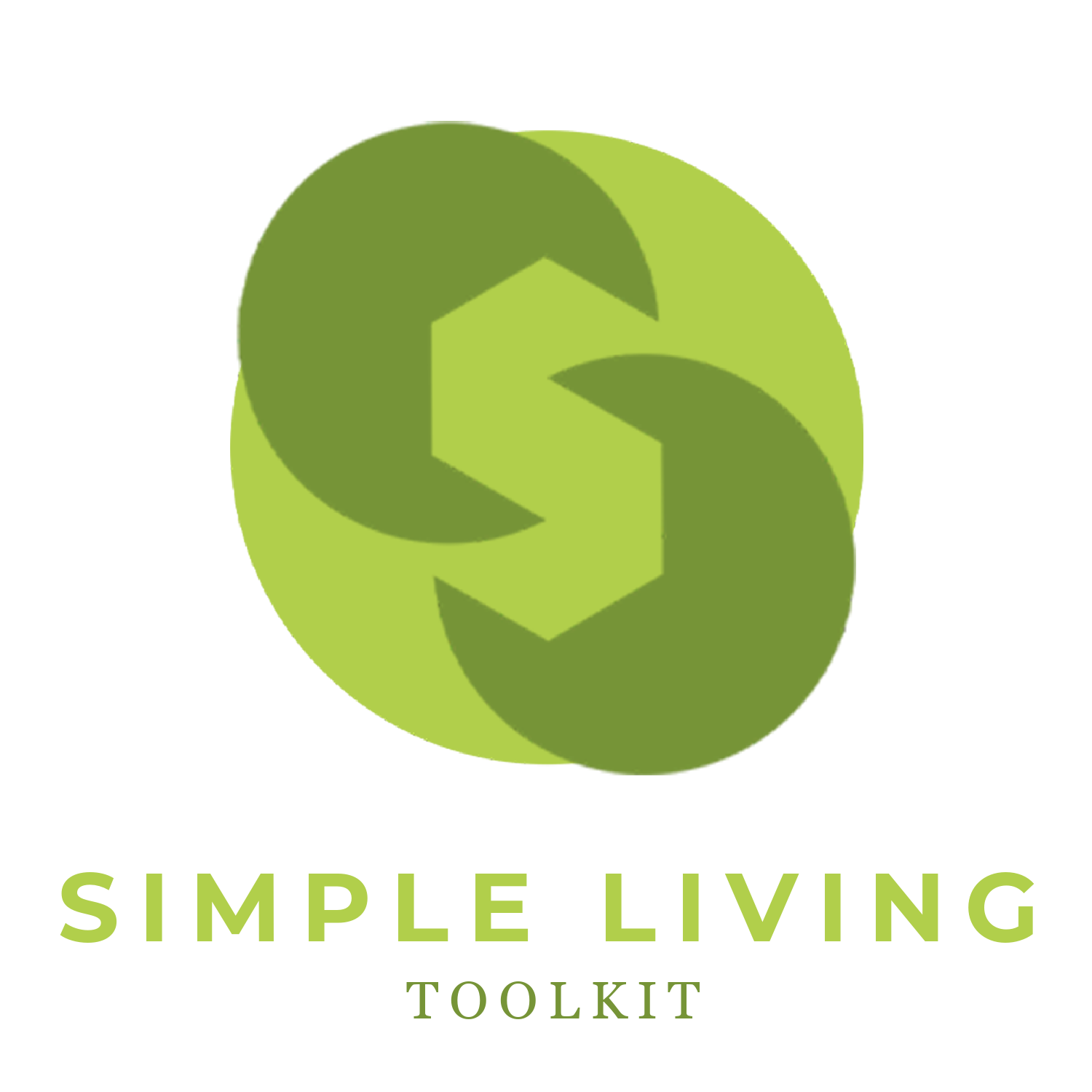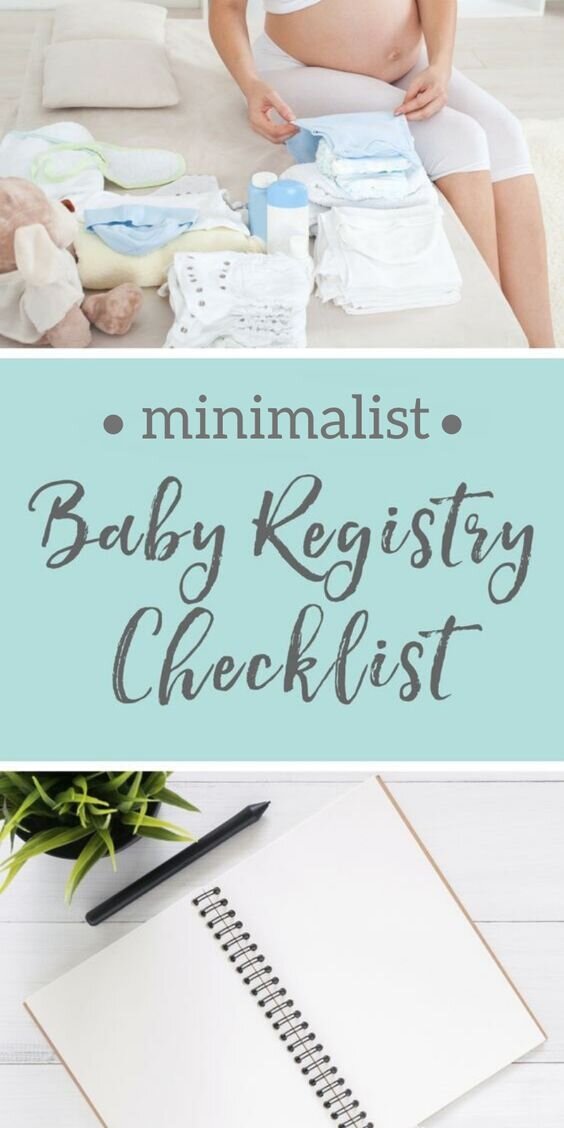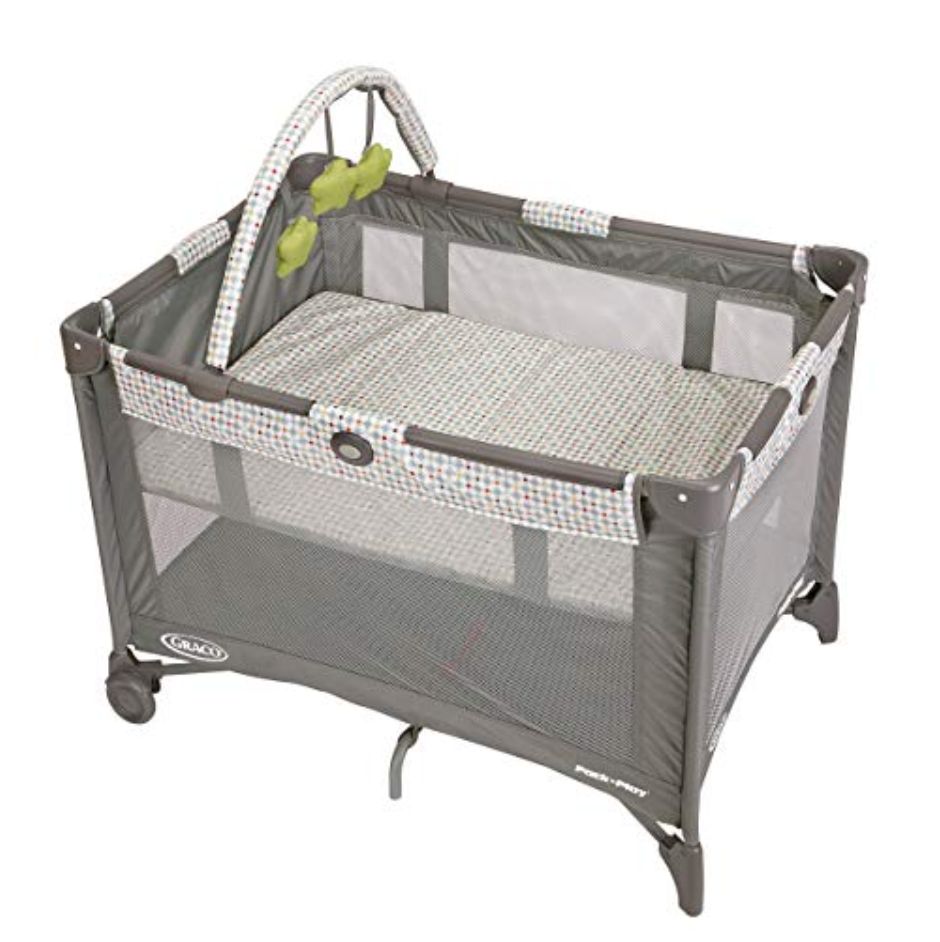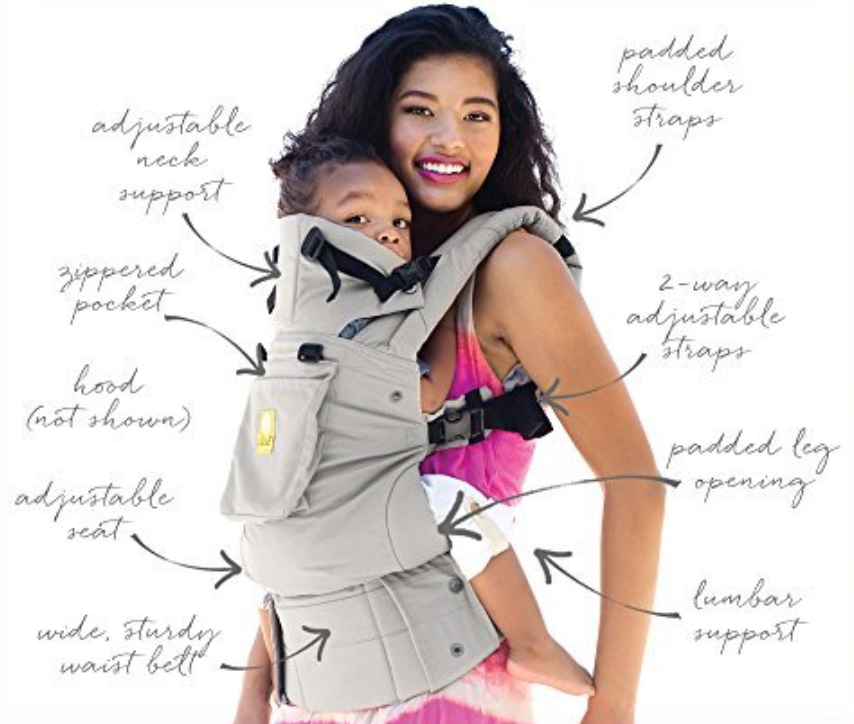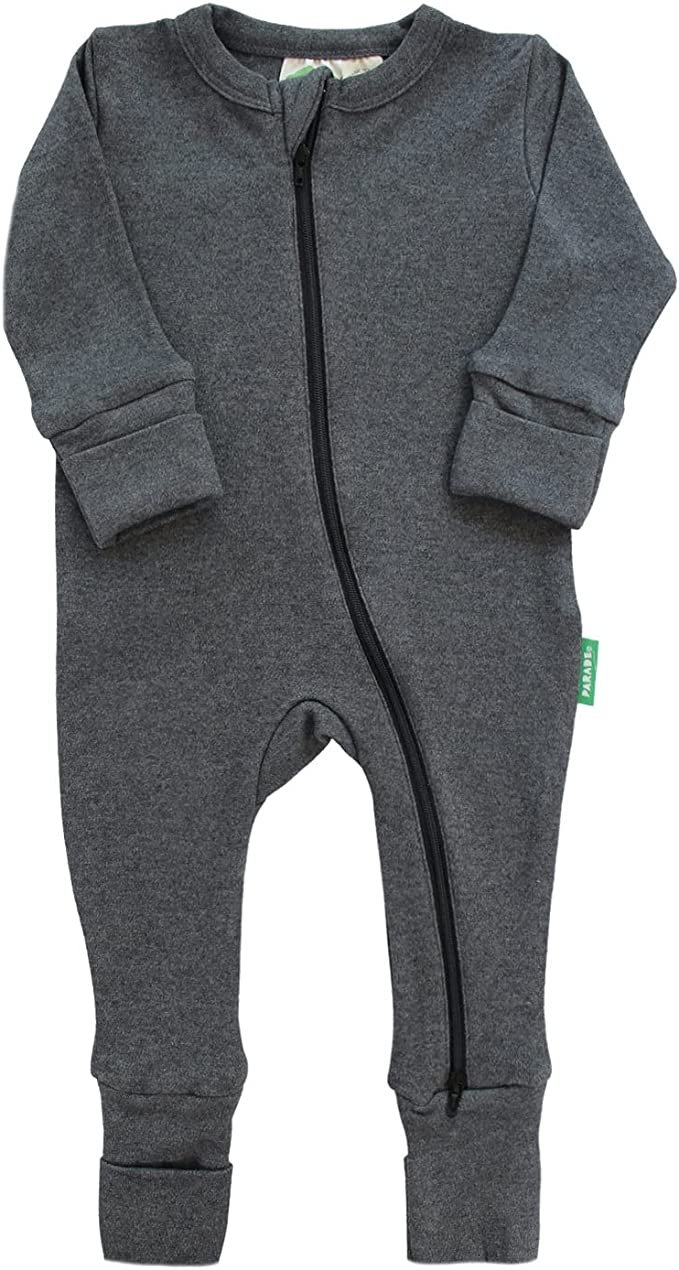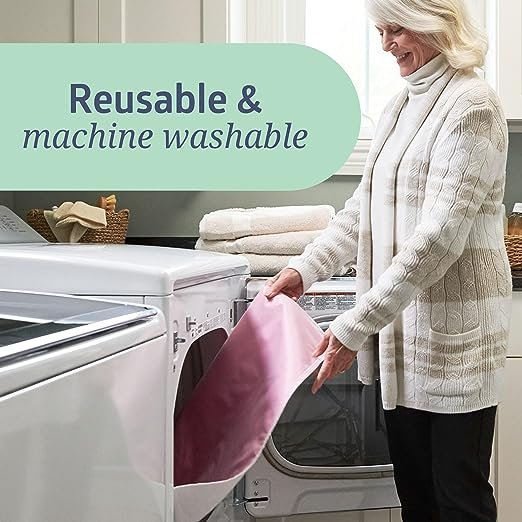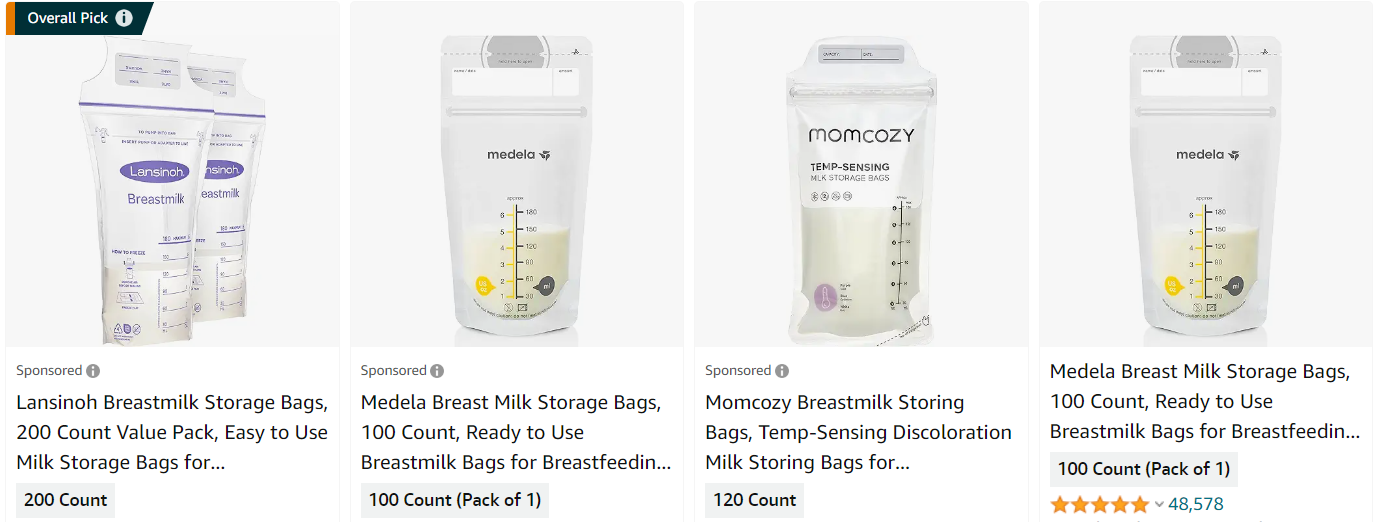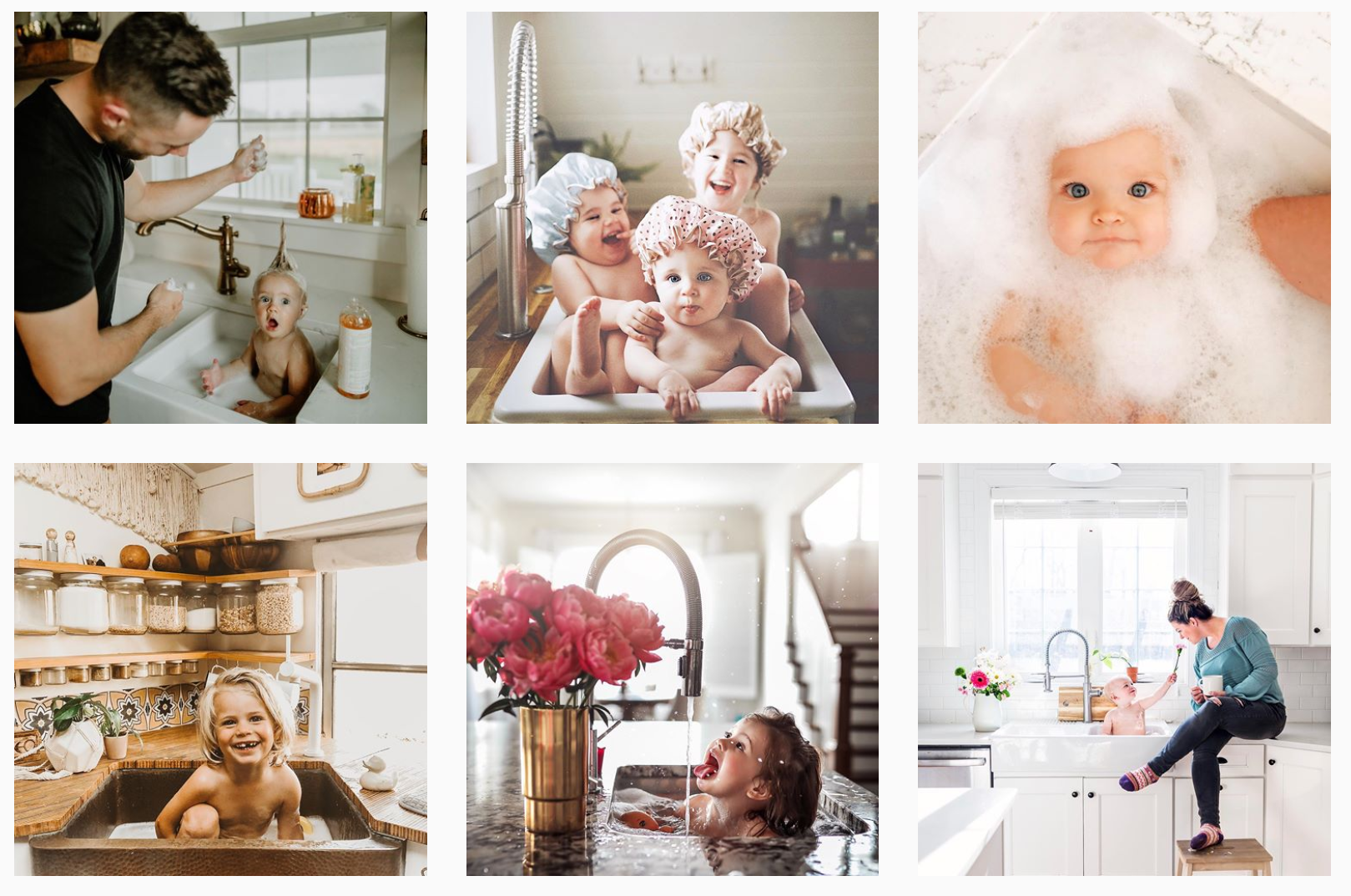The Minimalist Baby Registry Checklist
Putting together your baby registry is nothing if not overwhelming.
There are over 60,000 options on Amazon.com alone.
You already know you don't need everything recommended to parents-to-be.
feather your nest?
As soon as you enter the world of, say, the "baby" category on Amazon, you're bombarded with things you may have never even considered, along with marketing messages preying on your fears and concern for your baby's wellbeing.
After all, throughout pregnancy, you're biologically primed to "feather your nest" with anything and everything you may need to keep your baby safe and comfortable.
Plus, you may have conversations with other well-meaning parents in which they mention things you never even thought about, things like "pee-pee tents," and "diaper genies."
(Scroll down to the "What to Skip" list for more on this.)
Having been there, done that, twice (and come out on the other side with two kids who are now well past the itty-bitty baby stage) I can tell you definitively that you don’t need most of what is suggested.
Here’s what we did
My husband and I created the first version of our minimalist baby registry years ago for our first baby. We were planning to continue our low-stuff nomadic lifestyle, so everything we purchased needed to travel with us or be easy to pass along when we were done with it.
Then we updated that list for our second kid, and fine-tuned it even more. Today, I’m sharing the results of countless hours of pre-purchase research and in-the-trenches testing through the babyhoods of my two children. I have recently updated this list with what I've learned years down the road, including what I did the same — and differently — for baby #2.
Who it’s for
The checklist below will be helpful for you or any friends or family members you have who are expecting a baby and are on a budget or living a low-clutter or minimalist lifestyle.
Traveling with a baby
This list will also be helpful for nomadic families or travel lovers who don't want to give up those weekend getaways and vacations abroad just because they are having a baby. If you travel frequently, it's important for your baby’s comfort (and your own!) that you can easily create a similar environment on the road as the one at home. Therefore, you don’t want too many specialty items at home that you can’t easily take with you to be part of your baby’s daily routine.
time range covered
The list is intended to provide for newborns and babies up to 6 months old, but many items will serve long past that 6-month mark.
-—-The Registry Essentials Checklist-—-
This post contains affiliate links. As always, all opinions are 100% my own and not for sale. While not every linked item has been personally tested by me (and baby spit-up on), many of them have been tested in my own personal trenches, as it were.
1. The sleeping situation
We chose a portable playard (pack and play) for a safe and comfy place for our babies to sleep. No crib. Our version from Graco came with a removable bassinet that hangs inside it and can be used in the early months for sleeping. (Here’s a different brand that’s highly rated.)
Last time I checked, the upper bassinet area without an added mattress (just the one it comes with) is regarded by pediatricians as a safe newborn sleeping area, but always do your own research on safe sleep practices and check with the AAP to learn about safe sleep for infants.
Once our baby passed the weight limit (listed on the product), we removed the upper bassinet and put him down to sleep in the bottom, on an after-market mattress purchased separately via a baby furniture store and placed on top of the mattress that comes with the playard. I’ve heard some babies sleep just fine on the thin, foldable pad that comes with the playard, but I wanted something thicker on top of that to ensure a firm and comfortable sleeping surface. For safety, make sure the additional mattress fits very snugly inside the play yard so you don’t have gaps between the mattress and the sides of the playard. Similarly, make sure your fitted sheet is sized to snugly fit the mattress.
If I were going to be in the same place for years, I might buy a traditional crib, but a foldable play yard was a great option for full-time sleeping for us. It travels well, and our first baby slept well when we traveled since it was the same environment he was in at home. It was the same with our second baby.
A playard is also light in weight and has two wheels, so it can easily be rolled into another room, if say, you want your baby to nap in a different spot than where they will be sleeping at night. This versatility made this sleeping set up a win for our family.
2. Baby carrier for baby wearing
I made a decision to avoid strollers for the first four months with both of my children. Having only the carrier was great for bonding with my baby, gaining strength, and losing the pregnancy weight. But it was mostly about bonding with my baby and keeping that little cherub's ear right on my heartbeat, skin to skin, as often as possible.
There are a lot of options, so here I’ve saved you the hassle of looking through every one. It's really important to get one that suits newborn up to 40 pounds and that you can choose from lots of placement options. Meaning you’ll want to have the option do front inward-facing carry, front forward-facing carry, rear forward-facing carry (backpack style), and side hip carry.
I bought an Ergobaby for my firstborn, but later replaced it with the EVEN more adjustable and ergonomic LILLEbaby for my second. The carrier I bought from Ergobaby couldn’t do front forward-facing carry. Turns out they have one that does it all, I just bought the wrong one. Options are so important because you never know what carry position your baby will favor.
The LILLEbaby (here’s the one I recommend) carries baby in all the positions and doesn't require any extra accessories. There's a strap inside that easily folds away when you don't need it; you can put a folded blanket over the strap to support your newborn in the early months when they would otherwise sit too low in the carrier. (Don’t buy a special insert as it won’t be needed after the first month or two. Just use a folded blanket to give you infant a boost.)
It’s me, the author of this blog, wearing my second baby in the LILLEbaby carrier.
I spent a lot of time wearing by babies in both the Ergobaby and the LILLEbaby. The LILLEbaby has advantages over Ergobaby, including a few small but very thoughtful design improvements, such as a pad to protect your chest from the front strap when doing a backpack style carry. Overall, my sense was that the LILLEbaby designers care more about moms and dads because the product is slightly more adjustable, a touch better designed. And just a little better makes all the difference.
I totally love my LILLEbaby. It’s probably my all-time favorite thing on this list.
3. Car seat
A rear-facing infant car seat is a must. And please, please, get one that is easy to uninstall and reinstall. Especially if you travel a lot.
You may want to get one that is part of a travel system (stroller/car seat combination). See below for recommendations on a stroller travel systems.
4. Stroller
We didn't get a stroller until our babies were more than 4 months old. When we did buy a first stroller, we got away with a nice lightweight umbrella stroller.
Later, I bought a used BOB Revolution jogging stroller which I have mixed feelings about. (The feelings: they are not allowed in airports due to their large size, but that size is useful sometimes for protection in a crowd, and it's certainly nice to run with your baby, but on the other hand, running is important alone time if you can get a sitter, friend, or partner to care for your baby while you take care of yourself.)
If you want to make a travel system stroller part of your registry, someone I trust just did a whole lot of research and settled on an UPPAbaby travel system which works from newborn up to preschool age and includes a car seat. UPPAbaby (which always hits my brain as “upper crust baby” or “uppity baby” is a pricey option but you may be able to squeeze it into the budget since you’re going quality over quantity as a minimalist. It really is nice to have a system that works seamlessly. I’ve seen this brand in multiple countries, which tells me that UPPAbaby is a global favorite.
For baby #2, a generous friend gave me a pre-owned Orbit Baby travel system and I really enjoyed how seamlessly it worked. If I could do new parenthood over again, I’d definitely opt for a high-end travel system from the get-go. This is where you want to put your coin. You can send your dubious partner here to read this blog post written by a frugal minimalist mom.
5. Video or sound monitor
This was not on my original list and I regret it. I spent too much time anxious about my baby when he was napping. I didn't have a way to check on him without going into his room, which would potentially wake him up. I'd recommend a video monitor so you can do a quick visual check every time your "mommy anxiety" kicks in.
However, I've heard that it's best to avoid the monitors that go with you when you're running errands or on a date night. Get someone you trust to watch over your baby, and trust them. Otherwise you'll be on the monitor the whole time you're out.
1st Update - So far I have NOT used a monitor with my 2nd babe. We’ll see if that changes. This list is an ongoing experiment. I think what I’ve learned is I have less anxiety with baby #2.
2nd Update - I’ve come to the conclusion that a baby monitor is not necessary if you are low anxiety (anxiety may be lower with second baby as it was for me) and live in a home where you can hear your baby cry from any room. Those of you with higher anxiety and/or a large or soundproof home may want a sound or video monitor so you can hear or see when you baby wakes up from a nap or at night if you’re not room-sharing.
6. Diapers and wipes
For baby #1, we started with size newborn disposable diapers and we had to size up about once a month, so I suggest to parents-to-be that they don't buy too many in a tiny size. Those little bums grow fast! We used about 100 per month in general, and maybe more those first couple months when we changed him more often than was necessary since we were learning his habits (and the amazing capacity of diapers).
For baby #2, we used disposable diapers and cloth diapers. I used disposable when easier or when maximum absorption is needed (traveling, night time, and out of the house) and cloth diapers around the house or when I wanted to keep a few diapers out of the landfill and save some money.
I bought a few second-hand cloth diapers from a friend whose kids are all now potty trained. I found that it wasn’t quite enough. They were a few different brands, and some had Velcro that had worn out, so I couldn’t use all of them. I ended up buying new ones.
Among the various brands I’ve tried, my favorite reusable diapers are these Alva Baby cloth diapers. I like that they come in a set, and they are easy to clean. At first, I wished they had hook and eye (Velcro) closures, but then my baby figured out how to open those! I ended up being really happy long-term with these snap closure pocket diapers (also called modern cloth nappies or pocket nappies).
7. White noise machine
We love this white noise machine. It's small and portable. We used one machine with both babies and only had to replace it after five years of use! It has helped me get great sleep in various hotel rooms polluted by construction and traffic noise. It helps our kids stay asleep while we’re watching Netflix. Highly recommended.
8. Easy clothing
Sometimes I think the designers of baby clothes don't actually have children themselves. I was shocked by how difficult many baby clothes are to use. Seriously. I got sweaty just dressing my baby. This is an area that a good designer needs to take on.
Here’s what you’ll need: a few onesies, rompers, pants, soft hats, and socks. Make sure everything is soft.
Your friends are: zippers and minimal snaps. Your enemies are: buttons and too many snaps. Also, easy access to the diaper area is key. Kids grow really fast (and in spurts) so clothing is a buy-as-needed area.
Update: My sister introduced to me to Parade Organics and I love it. They are the easiest and cutest organic baby clothes I have discovered so far. The two-way zipper on the romper makes diaper changes easier.
9. Large washable underpads (4)
I didn’t know these existed until I went to the hospital to give birth. (It was my bed pad giving me a little extra security of not staining the sheets during recovery.) Then we, oops, stole one from the hospital as we were packing up to go home. When I called the hospital to confess our crime, they told me, understandably, to just keep it.
These have been so useful for years. For changing diapers on, we just placed it on the floor or bed and changed the baby there. We’d throw it in the washer and dryer and it would always come out clean and like new. Oh, it's also good for tummy time. It travels well too, folding up to the size of a light jacket. It even served as an "in case" pad under the sheets during our potty training phase.
It’s likely the hospital sourced these from a medical supply company. However, I later found them on Amazon. Check out this 4-pack. AMAZING. Also good for pets? What? How many uses does this product have? And they are SO washable and durable. I have purchased only two or three 4-packs over the course of eight years, and they are still in great shape.
10. Packaged snacks stashes and (very specific ) water cups with lids. (for you, breastfeeding mom)
Those first few weeks of breastfeeding were tough. When I'd finally get my baby latched on, I'd settle back into the chair, couch, or bed, and immediately get hit with undeniable, dying-in-the-desert thirst along with hunger pangs. But I couldn't move because that would disrupt the latch we'd just worked so hard for. So usually I'd shout for my husband to bring me water and snacks. But sometimes he couldn't hear me or wasn't home.
My solution? Hide PACKAGED SNACKS around your house. Before you go into labor, put them under your mattress, between couch cushions, inside of decorative pottery, EVERYWHERE! (I’m kind of joking. But not really.)
And you'll usually only have one hand available, so don't sit down with a bottle of water. (I can't open a bottle of water with one hand. Can you? Start practicing doing everything one-handed since breastfeeding usually requires one hand.) And don't sit down with an open-top cup because like me, you might be clumsy from sleep deprivation and that water will spill.
You need a jumbo cup with a lid and maybe a straw if it helps you hydrate faster. For me a straw was faster and safer than a cup I had to tilt. See above paragraph about being clumsy from sleep deprivation. You don’t want to drop a heavy metal cup on your baby’s head. Also, sometimes you’ll have zero hands free and a partner or friend will hold your cup for you to drink from. In this situation, a straw also makes things easier. Thankfully you have me to tell you about these new situations that breastfeeding mamas face. It’s not as hard as it sounds if you’re prepared.
When baby is hungry, first fill your cup. Literally. You won't want to, because when your baby is crying all you can think about is making your baby feel better, but learn from my experience, please, so you don't spend that precious breastfeeding time feeling thirsty and deprived.
11. Breast pump
In some places your insurance company is required by law to provide one to you. This is vital to have before the baby comes, as you'll want to have it on hand during those first few days and weeks of learning how to breastfeed – when your breasts are engorged and the baby hasn't learned how to effectively nurse on a very full breast.
(Again, learn from my mistakes. My pump hadn’t yet arrived I was one udderly miserable dairy queen that first week. I had to bring a specialist in to help me get the milk to come out the first time. A pump would have solved the problem in a few seconds.)
When my pump finally arrived, I loved it. You want to go for a “hospital grade” machine. While I didn’t try other pumps, (so I can’t compare it to others) I do highly recommend the one I chose from my insurance company’s offerings. I gave it away after the first baby and purchased a new one for the second when I didn’t have the same insurance plan. It is available on Amazon here.
Update: It looks like there has been some innovation in this area since I pumped for my babies. I’m thrilled to see several hands-free, hospital-grade, in-bra double pumps available today. This one from Momcozy is highly rated. I dreamed about this kind of product back when I was holding my pump to my breast for the whole time (and generally only pumped one breast at a time so that I could have one hand free).
12. 2-4 bottles with nipples for pumped breast milk
If you’re going back to work full time, and plan to pump, you may need a cooler and more than four bottles.
However, for starters, 2-4 bottles should be fine until you get a feel for things. Here’s a highly rated, BPA-free option.
13. Bottle brush for cleaning bottles and nipples
Specialized baby bottle brushes come with a larger brush for inside the bottle and a smaller part for cleaning nipples.
14. Breast milk freezer bags
It’s surprisingly important to have special breastmilk bags that look different than regular freezer storage bags. Breast milk bags are tall, stiff, and narrow, making them easier to defront and pour into a bottle than your standard zip lock bags. Look for BPA-free options.
15. 4-10 lightweight swaddling blankets
These are for swaddling and burping and cleaning random baby messes. These won't last long for swaddling but will be vital for many months for those sudden spills that come out of babies.
16. Sleep sacks
The swaddling days don't last long for most babies, and blankets get kicked off or become hazardous. Get several sleep sacks for chilly nights when your baby’s sleepwear won't provide enough warmth on its own.
As a bonus, a sleep sack keeps the kid safe in bed after that age (about a year) when they start trying to put a leg over the edge of the bed to climb out.
17. Baby wash and shampoo
I haven’t formed a preference for one particular baby wash or soap (usually 2-in-1 shampoo and body wash). I tend to buy something locally that seems as mild, gentle, and natural as possible.
18. Something to soothe sore nipples
Lanolin is the recommended product in the USA. I tried it, but then switched to coconut oil. I prefer the smell, and that it's from a plant rather than an animal. And it seems to heal my skin fast. Whatever you choose, have it on hand before you give birth because sore nipples are as bad as they sound.
19. Baby oil/moisturizer
I prefer a natural plant oil like olive, coconut, almond, or jojoba. These seemed to do the job just as well as a cream specifically branded for babies. Moisturizers marketed to parents for babies tend to have long ingredient listings. It seems simpler and healthier to me to put one ingredient at a time on your baby. Anecdote: coconut oil applied to my baby’s scalp, left on for 15 minutes, then washed off with gentle baby wash/shampoo healed and removed my baby’s “cradle cap,” a yellowish, flaky area of dry skin on the scalp.
20. Diaper rash cream (or coconut oil)
If you’re lucky, your baby will respond well to coconut oil to heal and prevent diaper rash, thus items # 18, 19, and 20 can all be covered with a jar or two of organic coconut oil. For our first baby, coconut oil ended up being more effective than the leading diaper rash cream. It smelled better too!
21. Pacifier (maybe a couple with different types of nipples for baby to try)
I remember being worried that giving my first son a pacifier would make him addicted to it, or confuse him and make it more difficult for him to breastfeed. If I remember correctly, I tried a pacifier after he’d learned to latch on to the breast. And then it made my life so much easier. At some point around 7 or 8 months old he started dropping the pacifier out of his mouth frequently and I took that as a cue that he was done with it. There were a few days of adjustment but then he no longer missed it. Same with my second baby.
We used the ever-popular Philips Avent Soothie pacifiers. I think someone gifted us the one attached to a plush toy animal, and that was a big hit because it was hard to lose and gave our baby something to hold onto.
22. Super seat/stuck seat
The gist is: somewhere you can stick your kid nearby and you know they're safe and occupied while you take a shower. It's a peace of mind thing.
We started using the super seat once baby could hold his head up on his own. Our version was called a super seat because it is a supportive chair, a booster seat, a snack tray, and a toy-holder all in one. Later, he used the booster part in place of a high chair. It came with straps to safely attach to a regular kitchen chair.
We bought something very similar to this (same brand, different toy theme). However, were I to do it again, I’d probably try to find one with higher ratings. There were a few buggy things that could be better. I don’t think toys need to be attached. Babies quickly tire of the attached toys and want to play with something else (see below section on skipping toys). Also, over time the hard-to-clean toys get undeniably… gunky.
23. A napper or co-sleeper.
It's nice to have something safe you can put your baby down in when you want them napping near you, but you don't want to put them in a crib or drag a play yard to your space. They'll quickly grow out of a napper (also called a lounger or bassinet), so make it affordable or get it pre-owned. In Finland they use a cardboard box! It really just needs to be a flat, safe, comfortable place for your baby to sleep. Do your research and get something that suits your lifestyle and parenting style. Ukraine, where I had my second baby, does the same thing Finland does, giving new parents a large box filled with baby essentials. The box doubles as a crib and includes a thin foam mattress; I used the box the hospital gave us for that purpose in the very early weeks when I wanted my little one to nap nearby.
This item makes my minimalist list (barely!) because it was really helpful in the early days. Infants quickly grow out of nappers but they are useful as a safe place to put them down when they take 4-5 naps per day.
24. forehead/Ear thermometer
I had to pick up one of these in a hurry after our son was born. Although the hospital actually gave us a thermometer in a baby gift pack, it was a standard insertion (mouth or rectum) thermometer.
An insertion thermometer is the last thing your baby wants to deal with when she or he is feeling ill. And I can’t blame a baby for not wanting cold metal stuck in any orifice, at any time, sick or healthy. So I found myself delaying taking my son’s temperature when I suspected he had a fever. As soon as we got a forehead thermometer my parental anxiety decreased quite a bit as it made taking his temperature, and usually finding out there was no fever, easy. I recommend getting one that doubles as an ear thermometer. My pediatrician told me the ones that go in the ear are more accurate.
I purchased mine at a CVS store, but if you want to put one on your Amazon Registry, here’s a suggestion.
25. Baby Movement Monitor
I almost left this one off the list. It had a tendency to slip off my baby’s diaper, which meant that there were a few false alarms that had me up in the middle of the night, heart racing, before I checked on him and saw he was fine.
However, recently I had a vivid dream taking me back to those early days of caring for my newborn. I remember how hard it was to actually get restful sleep because I was worried he would stop breathing in the middle of the night. So this item is going back on the list.
I should also tell you I didn’t suffer from anxiety before having a baby. Parenthood changes you in unpredictable ways, and for me there was a huge increase in anxiety.
So my final verdict is that if this device (we bought twice, once for each baby, and recommend the Snuza Hero Baby Movement Monitor) will help you have peace of mind so you can snatch some good sleep when your baby is sleeping, get it.
I think it’s worth it in those very early weeks if you have a little anxiety or tend to wake up at night just to check that your baby’s breathing is fine. (Which, just FYI, is normal new parent behavior.)
26. Birth Practice Online Birth Preparation Course
Are you due within the next 4 months and planning a hospital birth?
Birth Practice is an evidence-based communication and mind-body childbirth training program for promoting positive hospital birth experiences. My sister Lucia and I co-created it under advisement by doctors, childbirth educators, and birth practitioners. (Use coupon code GEN for a discount).
Giving birth doesn’t have to be frightening, painful, unsatisfying, or traumatic.
Our vision is that more women feel powerful, positive, and supported as they give birth. It is the first birth preparation course that aims to improve a woman’s satisfaction with her birth experience instead of aiming for a particular type of birth.
The Birth Practice online birth preparation course includes tools for decision making and clear communication with birth partners and care providers as well as practices for laboring and birthing without anxiety. These are research-based, universally applicable tools and practices that work for all types of birth.
After our own positive birth experiences, my sister and I collaborated with OB-GYNS, birth workers, and doulas to develop the ideal birth plan template (FREE) to help you prepare for an empowered and positive hospital birth experience.
-—-What to skip-—-
Now that you know the essentials, here’s what you can skip to save money and space in your home.
1. Toys
Babies are entertained easily. Crinkling paper. A spoon. Their own ear. Toys are really not necessary until later. Plus you'll unavoidably collect toys as gifts because they are fun for friends and family to buy for you.
2. Specialized baby moisturizers
As I suggested earlier, these can contain nasty chemicals. Just stick with pure plant oils like coconut, olive, and jojoba. Always check your baby for signs of an allergic reaction when putting something new on their skin.
3. High chair
I never understood high chairs. They're huge. Why buy such a big thing when you can get a small booster seat and the baby can sit (when they can) with the family at the table? Plus their height, higher than a normal chair, means a fall would be more dangerous. And, here’s a parenting secret no one talks about: every baby falls. There’s gonna be a fall. All you can do is your best. But they’re gonna fall. Make sure it’s from as low a point as possible.
4. A changing table
A huge piece of unnecessary furniture. Also a falling risk. Floor or bed changes are easy and safer. Never walk away from your baby when they could roll off the bed or roll into a dangerous situation.
5. Pee pee tent
Alert: if you have a boy, he might pee on you when you change his diaper. Pee pee tents are little tents you put over his penis during that brief window of risk while you change his diaper. Just put your hand over the stream so it doesn't hit your face. Otherwise, let the guy get some airflow during diaper changes.
6. Wipes warmer
Nope. Get used to the refreshing coolness of wipes in their natural state, kid.
7. Diaper genie
Just put those dirty diapers in a bag and tie it off. Maybe get a trash can with a lid if the smell is really bad. You don't need a specialty trash can (with moving parts liable to break and specialty supplies to be purchased at regular intervals).
8. Anything with buttons or beads
Buttons on clothes take too much time and can pop off and become a choking hazard. Beads, which can also become a choking hazard, are generally obviously avoided for babies. However, I’ve noticed a trend of making babies wear a necklace of amber beads for supposed pain-relieving benefits. Amber may be soothing to look at or touch, but has no other proven benefits when worn, and your baby will be safer without the potential choking and strangulation hazard of wearing a necklace.
9. Complicated wraps for baby wearing
Don't buy anything that needs a tutor, class or more than one person to put on. Just go with one baby wearing product. The already-mentioned easy, highly adjustable, works-for-mom-and-dad LILLEbaby.
10. Crib accessories
Some crib accessories like bumper pads can put baby at risk.
Other accessories to avoid include those light up, large, plastic things that play lullabies and have colorful visuals and usually attach to the side of a crib. Remember that whatever becomes part of your baby's going-to-sleep ritual must be repeated every single night and nap, sometimes for years.
You really don't want anything that is so specific that it can't be easily replaced or repeated. You likely wouldn't travel with the light-up plastic thing, so I'd recommend skipping it if you want to travel easily with your baby.
11. Bottle/pacifier sterilizer.
Buy things that are dishwasher safe or clean them with hot soapy water and a specialized brush like the one recommended above. Over-sterilizing may rob your baby of a healthy microbiome, which can lead to a variety of health issues.
12. Infant bath tub.
You don’t need a bathtub or special insert for your baby. They may make things a bit easier, but they may also increase the risk to your baby by adding a false sense of safety when your baby is in the bath. Use the kitchen or bathroom sink (sanitized first, of course) to bathe your baby. Never leave them unattended, even for a moment, and always keep their face out of the water. Use a cloth or wipes for cleaning the face. In the early days, babies do not need frequent baths, and can be wiped down with a warm, damp cloth. Once they can sit unaided, you can let your baby sit in a very shallow tub to bathe, or even take baths with them.
Bonus, babies getting sink baths are so sinkin’ cute. Seriously, go search #sinkbath on Instagram. Bad day? It just got better.
13. And... everything else not on the above list of essentials.
That’s right, you don’t need special baby combs or brushes, breastfeeding pillows (which are remarkably similar to regular pillows), or most of the other 60,000 items in the Amazon baby store. Stick with the 26 essentials listed on the checklist above and you should have everything you need for your baby to thrive.
That's it!
To the right is a quick summary (in image form) of what to put on your registry.
And here’s a downloadable PDF.
Now you know what to get for your bundle of joy, and what to skip.
On a super tight budget? You may benefit from my frugal and ultra minimalist version of this list: Newborn on a Budget: Everything You Need for Your New Baby for Under $500.
Now go get that baby registry done!
If you loved this post, “heart” it using the button below, and if you want to share it, there’s a button for that too. Please share this blog as a way of helping others simplify to live their best lives.
